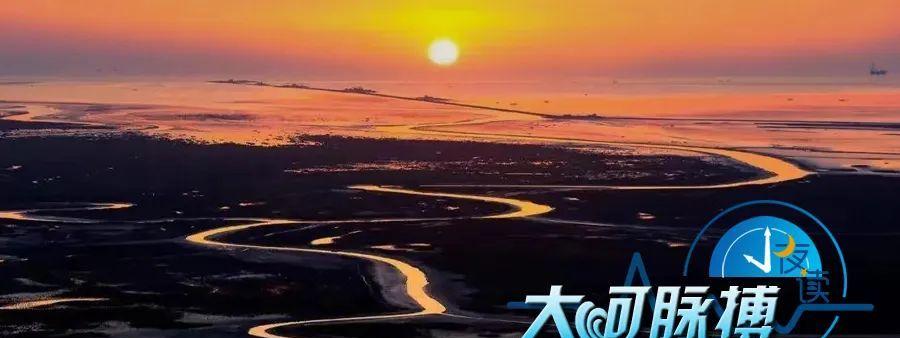
In Search of the "Earliest China"
What it might look like
Before the Xia Shang Zhou, there was an era in our history called the "Legend Era", that is, the Yao Shunyu Era. If you want to explore whether Yao Shunyu exists, there must first be a breakthrough point, that is, to determine the existence of the capital city.
In the view of Professor He Yi of the Institute of Archaeology of the Chinese Academy of Social Sciences, at present, all the evidence on the ground and underground points to the ruins of the Tao Temple as Yaodu, and the Tao Temple can be called yao shun's "earliest China". Many experts and scholars have also identified the site of Tao Temple as the origin of Chinese civilization. So where did this conclusion come from?
This has to start with the lofty mountains of Shanxi Province. Chongshan is also known as Ta'er Mountain. From 2300 to 1900 BC, a group of people using flat pots and fat feet lived here, and they continued to grow and create a splendid culture. The genes of these cultures have even been passed down to this day. Since then, it has been named Tao Temple Culture by modern archaeologists.
Aerial view of the tao temple ruins
The ruins of Tao Temple are located on both sides of the Jin-Shaanxi Grand Canyon in the middle reaches of the Yellow River, on the loess mound where Chongshan Mountain transitions to the Fenhe River, and the site covers an area of 4 million square meters. Around 4300 years ago, a huge prehistoric ancient city rose on the banks of the Fenhe River in southern Jin. It was a capital city, and in the magnificent palace of the city lived a king who admired Wende. The walls are strong, the treasury is abundant, and tens of thousands of people gather here. Palace areas, aristocratic residential areas, residential areas, sacrifice areas, storage areas, handicraft workshop areas, etc. are all available.
Zhu Shubian pot
In 1984, archaeologists found a fragment of a flat pot in the archaeological excavation, the fragment was broken stubble painted Zhu, and the two characters of Zhu Shu on the wall of the flat pot were examined, one of which was "Wen", and the other word was directly examined by Mr. He Yi as "Yao".
A capital city, in addition to having walls, palaces, and writings, is not enough to get proof, but also has a royal cemetery and ceremonial buildings for worshiping heaven, sacrificing land, and ancestors.
The dragon disk may be used as a symbolic illustration of the deification of the Emperor Yao royal family
In area II of the Tao Temple site, archaeologists found a public cemetery, where a total of 1309 tombs were excavated, all of which were rectangular earthen pit vertical cave tombs, and there were painted pottery wood, jade ceremonial vessels and ornaments buried with them, and the difference in rank was very obvious. At the same time, within the small town in the middle of the Tao Temple, archaeologists also found a large rammed earth building site, which is large in scale and complex in function, covering an area of about 1400 square meters, and the shape of the platform is semi-circular, and the semi-circular rammed earth column column surrounded by 13 pillars on the platform is very rare. Through years of field observation and exploration, it was found that the sunrise was seen from the second observation seam as the winter solstice day, the 12th observation seam saw the sunrise as the summer solstice day, and the seventh observation seam saw the sunrise as spring and autumn equinox. In 2005, 15 astronomers largely affirmed the large building as a monument to astronomical observations. On June 21, 2009, the excavation of the Tao Temple Tomb further established the status of the Tao Temple site as the "Yao Capital".
At the foot of The Tower Mountain, the majestic ancient capital is magnificent for a thousand years; the sound of melodious drums and chimes reverberates for a long time, indicating the dawn of the original civilization; the observation of the pillars of time and the existence of the four seasons, teaching the people to be seasonal and harvested. Civilization factors can only form a relatively mature civilization if they have undergone continuous development, accumulation and collection, and reached a certain level. The majestic "Tao Temple Civilization" has thus become the earliest empirical evidence that can be confirmed in the Yellow River Basin into an early civilized society.
Anchor 丨 Deng Wanying
Audit 丨 Chen Rui
Producer 丨Fan Yizi
Co-ordinator 丨 Luo Jingyue Yang Jing
Copywriter, responsible editor 丨 Deng Wanying
Art design 丨 Yang Hua Zhao Mo
Audio 丨Zhang Shijian Zhang Yufeng
Proofreading 丨 Yang Jing
References 丨 "Tao Temple Culture: The Origin of the "Zhongzheng" View of Chinese Civilization" "Tao Temple Ruins, Five Thousand Years of Heavenly King's Qi"
(To listen to more "Pulse of the Great River" article, please pay attention to the "China Water" WeChat public account for more content from the menu bar.) )